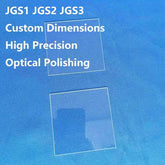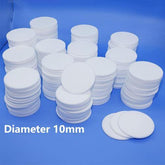The application of sapphire in aerospace industry
Sapphire (single-crystal alumina), a high-performance artificial crystal material, has exhibited remarkable technical advantages in the aerospace domain. Its outstanding properties encompass exceptional mechanical strength (compressive strength surpassing that of most engineering ceramics), broad temperature stability (resilience to extreme thermal fluctuations), and distinctive optical characteristics (light transmittance across the ultraviolet to infrared spectrum). These attributes render sapphire a promising candidate material for addressing the demanding conditions of aerospace environments.
In aviation propulsion systems, sapphire, leveraging its dual capabilities of light transmittance and protective functionality, has been explored for applications in high-temperature observation windows and rectification components of high-speed aircraft. Additionally, its superior hardness (Mohs hardness approaching that of natural materials) theoretically enables it to withstand the erosion caused by high-speed airflow and particle impacts.

The special requirements of space optical systems for materials have driven the exploration of sapphire applications. The material’s light transmission performance over a wide spectral range (covering important observation wavelengths) and its dimensional stability at extreme temperatures make it a potential choice for space optical devices.
In the field of electronic communication, sapphire’s relatively low dielectric loss makes it a focus of attention for high-frequency devices. Research conducted in academic circles has indicated that microwave devices utilizing sapphire substrates may offer performance benefits in specific frequency bands, including the millimetre-wave range.

In terms of thermal management, sapphire’s superior thermal conductivity and thermal stability (in comparison to ordinary glass materials) make it a strong candidate for use in the thermal control systems of spacecraft. In the conceptual design of some spacecraft thermal protection systems, sapphire composite materials are regarded as potential solutions. Materials engineers are currently engaged in research to explore the potential of combining sapphire with other high thermal conductivity materials, with the aim of optimizing the overall thermal performance.
The advancement of sapphire preparation technology (such as crystal growth and precision processing technology) has expanded its technical application potential. Modern crystal growth processes have made it possible to produce larger sapphire substrates, and nanoscale surface processing technologies have improved their optical surface quality.






